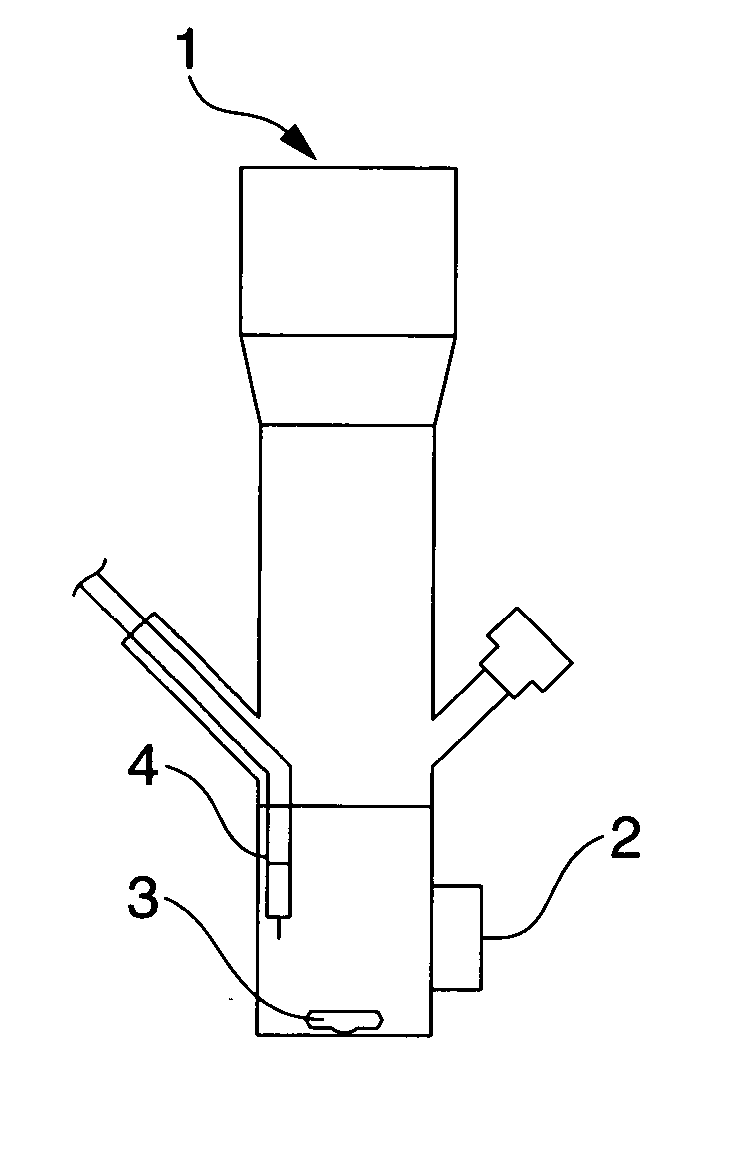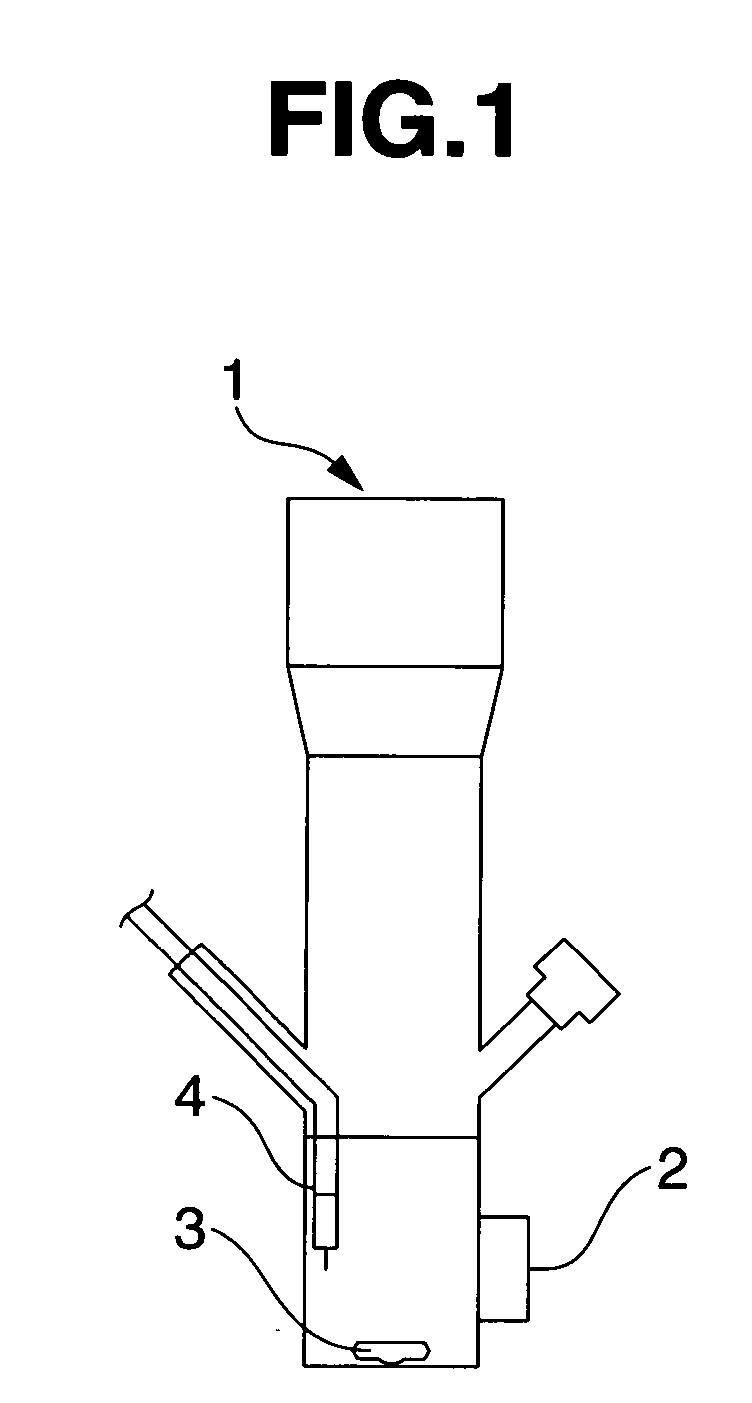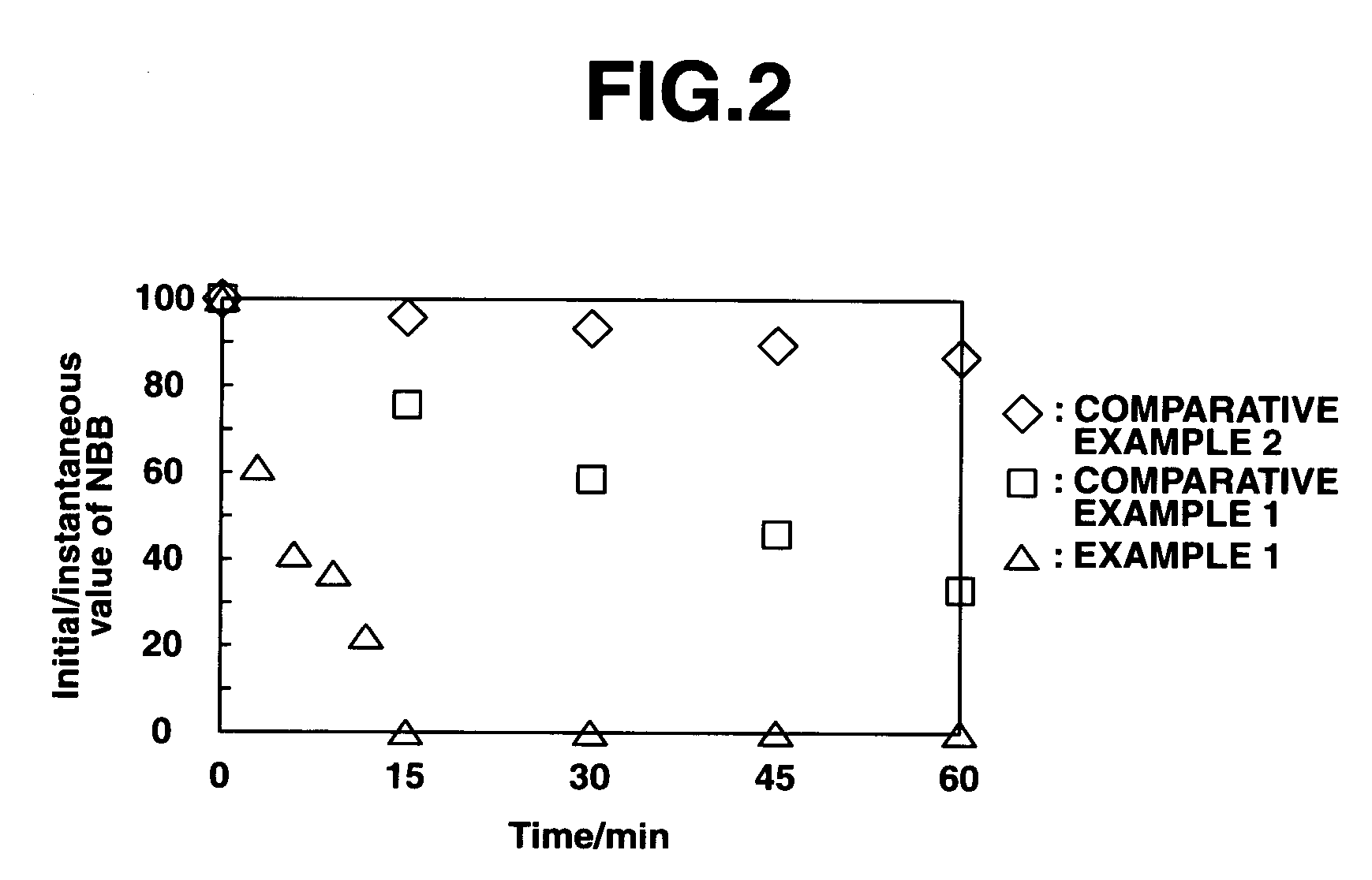Method for photolyzing organic matter and method for treating wastewater
a technology of organic matter and wastewater treatment, applied in the direction of organic compound/hydride/coordination complex catalyst, physical/chemical process catalyst, separation process, etc., can solve the problems of slow degradation reaction rate, difficult removal and recovery of catalyst, etc., and achieve the effect of improving the specific gravity, and improving the specific gravity
- Summary
- Abstract
- Description
- Claims
- Application Information
AI Technical Summary
Benefits of technology
Problems solved by technology
Method used
Image
Examples
synthesis example 1
[0089] Synthesis of Bis(trifluoromethanesulfonyl)imide Salt of N,N-Diethyl-N-methyl-N-(2-methoxyethyl)ammonium (2)
[0090] In the formula, “Me” stands for methyl and “Et” stands for ethyl.
[0091] A mixed solution prepared by mixing 200 mL of diethylamine (Kanto Chemical Co., Ltd.) and 85 mL of 2-methoxyethyl chloride (produced by Kanto Chemical) was placed in an autoclave and reacted at 120° C. for 50 hours. The internal pressure at this time was 353 kPa (3.6 kgf / cm2). After 10 hours, the crystals that settled out were removed by filtration, and the filtrate was subjected to normal-pressure distillation, yielding 66 g of 2-methoxyethyldiethylamine.
[0092] Next, 41.2 g of the 2-methoxyethyldiethylamine was dissolved in 300 mL of tetrahydrofuran (Wako Pure Chemical Industries, Inc.), following which 20.0 mL of methyl iodide (Wako Pure Chemical Industries) was added under ice cooling. After 30 minutes, the ice bath was removed and stirring was carried out overnight at room temperature....
example 1
[0095] A reactor 1 having an optically transparent window made of Pyrex (registered trademark) glass (FIG. 1) was charged with 30 mL of the ionic liquid (2) prepared in Synthesis Example 1 above and Naphthol Blue Black (Aldrich Chemical Co., Ltd.) was added to a concentration of 100 μmol / L as the organic matter, following which the reactor contents were bubbled with argon for 20 minutes. Next, 30 mg of titanium dioxide (P25, produced by Nippon Aerosil Co., Ltd.; average particle size, 20 to 30 nm) was added and the reactor contents were both irradiated with light (apparatus: Supercure-205S, produced by SanEi Denki Co., Ltd.; Hg—Xe lamp; 500 W / cm2; wavelength, 365 nm) through the transparent window 2 and subjected to ultrasound irradiation. The commercial Naphthol Blue Black was recrystallized from methanol prior to use.
[0096] Using a stirrer (MAGNETSTIR MGP-306, manufactured by Sibata Scientific Technology Ltd.) and a magnetic stirring bar 3, the system was mechanically stirred at ...
PUM
| Property | Measurement | Unit |
|---|---|---|
| wt % | aaaaa | aaaaa |
| wt % | aaaaa | aaaaa |
| temperature | aaaaa | aaaaa |
Abstract
Description
Claims
Application Information
 Login to View More
Login to View More - R&D
- Intellectual Property
- Life Sciences
- Materials
- Tech Scout
- Unparalleled Data Quality
- Higher Quality Content
- 60% Fewer Hallucinations
Browse by: Latest US Patents, China's latest patents, Technical Efficacy Thesaurus, Application Domain, Technology Topic, Popular Technical Reports.
© 2025 PatSnap. All rights reserved.Legal|Privacy policy|Modern Slavery Act Transparency Statement|Sitemap|About US| Contact US: help@patsnap.com



